Auto start technology allows manual cars to start remotely‚ offering convenience and comfort. It bypasses the clutch safety switch‚ enabling engine ignition without physical clutch engagement‚ ideal for preheating or cooling vehicles.
1.1 What is Auto Start Technology?
Auto start technology enables vehicles to ignite the engine remotely‚ providing convenience and comfort. Designed for manual cars‚ it bypasses the clutch safety switch‚ allowing the engine to start without physical clutch engagement. This system uses a remote control or smartphone app to activate the ignition‚ ensuring the car is ready to drive upon entry. Advanced models integrate with smart home systems and offer features like GPS tracking and door lock/unlock functionality. Encrypted signals enhance security‚ preventing unauthorized access. Ideal for cold weather‚ auto start technology modernizes driving experiences while maintaining compatibility with manual transmissions through specialized bypass solutions.
1.2 Benefits of Auto Start on Manual Cars
Auto start technology offers significant advantages for manual car owners‚ enhancing convenience and comfort. It allows drivers to preheat or cool their vehicle remotely‚ eliminating the need to physically start the engine. This feature is particularly beneficial in harsh weather conditions‚ ensuring a comfortable cabin temperature before entry. Additionally‚ auto start systems often include advanced security features‚ such as encrypted signals and theft prevention‚ providing peace of mind. By bypassing the clutch safety switch‚ these systems maintain compatibility with manual transmissions‚ making them a practical upgrade for drivers seeking modern convenience without compromising their vehicle’s functionality.
1.3 Overview of Remote Start Systems
Remote start systems enable drivers to start their car’s engine from a distance using a remote control or smartphone app. These systems typically include a control module‚ remote transmitter‚ and wiring harness. For manual cars‚ specialized bypass kits are required to simulate clutch engagement‚ ensuring safe and proper ignition. Advanced models offer additional features like GPS tracking‚ door lock/unlock functionality‚ and oil cut-off for enhanced security. Compatibility varies‚ but many aftermarket systems are designed to integrate seamlessly with manual transmissions‚ providing a reliable and user-friendly solution for remote vehicle operation.
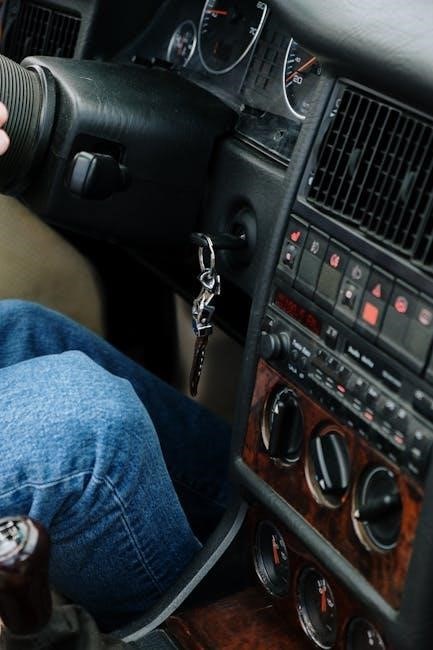
Compatibility of Auto Start with Manual Cars
Auto start systems can be compatible with manual cars‚ but require specific aftermarket solutions to bypass the clutch safety switch for proper ignition and operation.
2.1 Can Remote Start be Installed on Manual Transmission Vehicles?
Yes‚ remote start systems can be installed on manual transmission vehicles‚ but they require additional components to bypass the clutch safety switch. This ensures the engine can start without physical clutch engagement. Popular brands like Compustar offer solutions designed for manual cars. Installation typically involves wiring adjustments and may require professional expertise to ensure safety and functionality. While possible‚ it’s more complex than automatic transmissions‚ but modern systems make it feasible for most manual vehicles.
2.2 Factors to Consider for Compatibility
When installing a remote start on a manual car‚ compatibility depends on the vehicle’s make‚ model‚ and year. Ensure the system supports manual transmissions and check for specific wiring requirements. The bypass module for the clutch safety switch is crucial to prevent false starts. Additionally‚ verify the remote start kit’s voltage compatibility‚ typically between 8-20V. Consulting the vehicle’s manual and professional installers is recommended to avoid complications. Some systems may offer plug-and-play solutions‚ simplifying installation‚ but others require extensive wiring adjustments.
2.3 Popular Remote Start Brands for Manual Cars
Several brands specialize in remote start systems compatible with manual cars. Compustar and Viper are top choices‚ offering advanced features like smartphone integration. Start-X provides plug-and-play kits for specific models‚ while Excalibur systems are known for their reliability. Avital also offers affordable solutions with essential features. These brands ensure seamless integration with manual transmissions‚ addressing unique challenges like clutch bypass. Each brand caters to different budgets and needs‚ making remote start installations accessible for various vehicle owners. Always check compatibility with your vehicle’s make and model before purchasing.
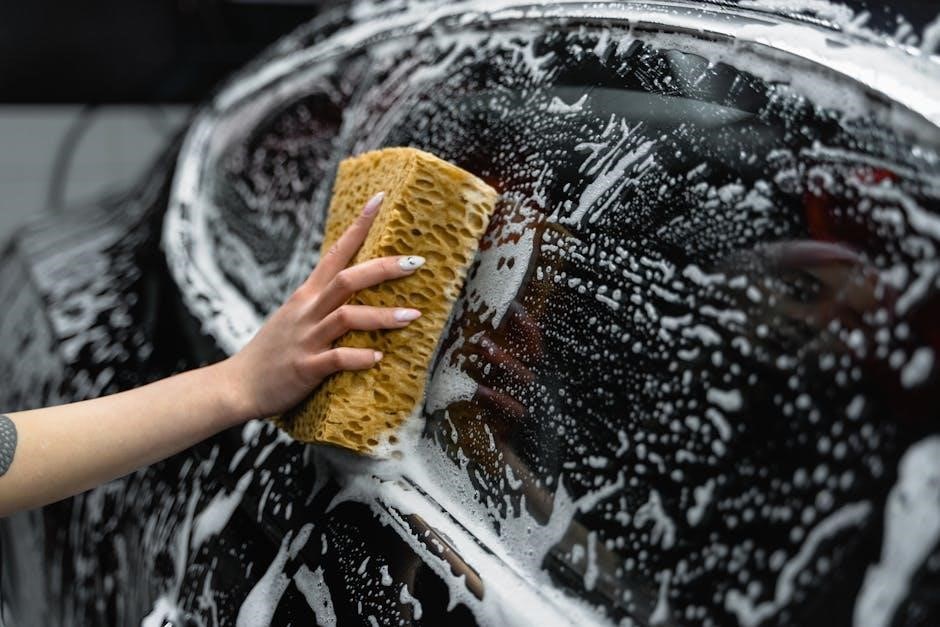
Benefits of Installing Auto Start on Manual Cars
Auto start enhances convenience‚ providing preheated or cooled interiors. It boosts security with advanced features like GPS tracking and app controls‚ adding value to your vehicle.
3.1 Convenience in Cold Weather
Auto start systems offer unparalleled convenience during cold weather by allowing drivers to preheat their car’s engine and interior remotely. This eliminates the need to physically start the car and wait for it to warm up. With a remote starter‚ you can enjoy a warm and defrosted windshield before even stepping outside. Additionally‚ advanced systems often include app integration‚ enabling you to start your car from the comfort of your home or office. This feature is especially beneficial for manual car owners living in regions with harsh winters‚ saving time and providing a cozy start to your journey.
- Warming up the engine and interior before driving.
- Defrosting windshields and windows without physical effort.
- Enhancing comfort during freezing temperatures.
3.2 Enhanced Security Features
Auto start systems for manual cars often include advanced security features that enhance vehicle protection. These systems use encrypted radio frequencies to prevent unauthorized access‚ ensuring only the designated remote can start the car. Many modern remote starters also integrate with car alarms and immobilizers‚ providing an additional layer of security. Furthermore‚ some systems automatically lock the vehicle upon remote start‚ reducing theft risks. These features not only add convenience but also provide peace of mind‚ knowing your car is secure even when started remotely.
- Encrypted signals to prevent hacking.
- Compatibility with car alarms and immobilizers.
- Automatic locking after remote start.
3.3 Increased Vehicle Value
Installing an auto start system on a manual car can significantly boost its resale value. This feature is highly sought after by buyers‚ especially in regions with extreme climates. It adds a modern convenience that enhances the driving experience. Potential buyers often view remote start as a premium upgrade‚ making the vehicle more attractive compared to similar models without this feature. Additionally‚ it highlights the car’s versatility and technological integration‚ appealing to a broader market. As a result‚ the vehicle stands out‚ potentially leading to higher offers when sold.
- High demand in cold or hot climates.
- Perceived as a premium feature.
- Broadens appeal to tech-savvy buyers.

Installation Process of Auto Start on Manual Cars
Installing an auto start system involves connecting wires to the ignition‚ clutch‚ and starter circuits. Special tools are required to bypass the clutch safety switch safely.
- Professional installation is recommended for accuracy and safety.
- Testing the system post-installation ensures proper functionality.
4.1 Tools and Equipment Required
To install an auto start system on a manual car‚ specific tools are needed. These include wire cutters‚ strippers‚ a multimeter‚ soldering iron‚ and wiring connectors. A bypass module for the clutch safety switch is essential to simulate clutch engagement. Additional tools may involve a drill‚ screwdrivers‚ and electrical tape. Ensure all components are compatible with your vehicle’s make and model. A professional installer often uses specialized diagnostic tools for precise connections. Always refer to the installation manual for specific requirements to avoid errors and ensure safety. Proper tools guarantee a reliable and secure setup.
4.2 Step-by-Step Installation Guide
Connect the remote start module to the vehicle’s electrical system‚ ensuring proper wiring to the ignition‚ starter‚ and clutch safety switch. 2. Install the clutch bypass to simulate engagement when starting remotely. 3. Mount the remote control or smartphone app receiver. 4. Program the system according to the manufacturer’s instructions. 5. Test the remote start functionality to ensure it works seamlessly. Additional steps may include integrating with the vehicle’s existing security system and ensuring all safety features are maintained. Always follow the installation manual for precise guidance. Professional installation is recommended for complex setups. Proper steps ensure reliability and safety.
4.3 Bypassing the Clutch Safety Switch
Bypassing the clutch safety switch is essential for remote starting a manual car. This process involves wiring a relay or installing a bypass module to simulate clutch engagement. The bypass allows the remote start system to activate the ignition and starter without physical clutch input. This step is critical for manual cars‚ as it ensures the engine can start remotely. The bypass must be installed carefully to avoid electrical or mechanical issues. Consulting a professional is recommended to ensure proper installation and functionality. This step is unique to manual cars‚ as automatics do not require clutch intervention. Proper bypassing ensures safe and reliable remote starts. Always follow manufacturer guidelines for installation.
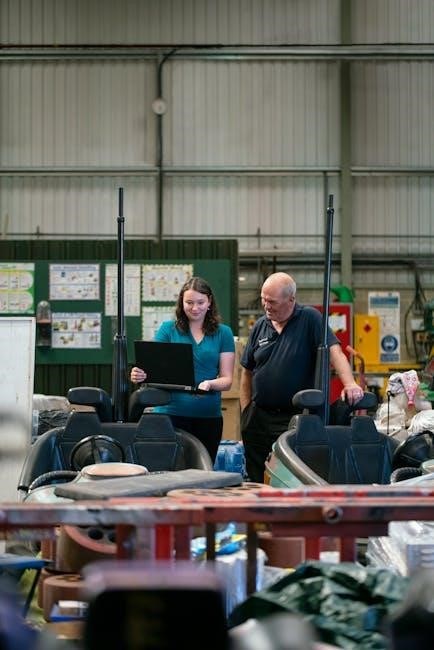
Safety and Legal Considerations
Remote start systems require adherence to safety and legal standards. Ensure proper installation to avoid electrical hazards and comply with local laws regarding remote start usage and insurance requirements.
5.1 Safety Precautions During Installation
When installing a remote start system on a manual car‚ ensure the vehicle is in park and the parking brake is engaged. Disconnect the battery to prevent electrical shocks or short circuits. Use proper tools and follow the manufacturer’s instructions to avoid damaging the vehicle’s wiring or components. Additionally‚ ensure the system is installed by a professional or someone with experience to maintain safety standards and prevent potential hazards during operation.
5.2 Legal Restrictions on Remote Start Usage
Legal restrictions on remote start usage vary by region. Many areas require systems to meet specific encryption standards to prevent unauthorized access. Additionally‚ some jurisdictions have laws governing the use of remote start systems‚ particularly in urban areas‚ to reduce noise pollution and potential security risks. Always ensure your remote start system complies with local regulations to avoid legal penalties. Check with authorities before installation to confirm compliance and understand any restrictions on usage.
5.3 Insurance and Warranty Implications
Installing a remote start system may impact your vehicle’s insurance and warranty. Some insurance providers offer discounts for vehicles equipped with advanced security features like remote start. However‚ improper installation or aftermarket modifications can void your manufacturer’s warranty. Always check with your insurance provider and vehicle manufacturer to ensure compliance. Additionally‚ certain systems may require certification or authorization to maintain warranty coverage. Understanding these implications is crucial to avoid potential financial or coverage issues.
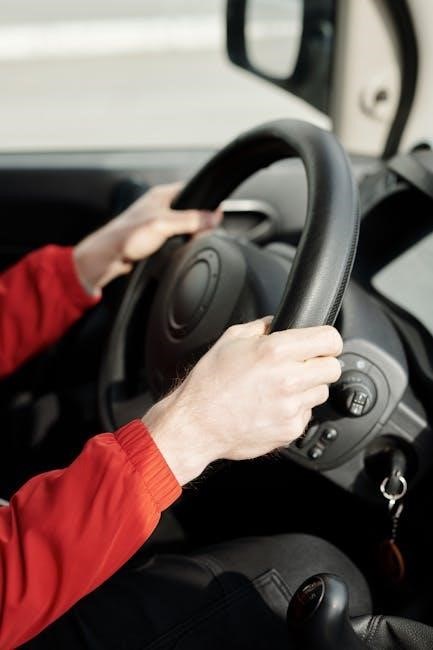
Maintenance and Troubleshooting
Regular checks of remote start systems ensure reliability. Troubleshooting common issues like faulty sensors or wiring can prevent system malfunctions. Always consult professionals for persistent problems.
6.1 Regular Maintenance Tips
Regular maintenance ensures optimal performance of your auto start system. Check the remote battery levels monthly and replace them when necessary. Inspect wiring connections for damage or corrosion. Ensure the clutch bypass module is functioning correctly‚ as manual cars require this for remote start. Test the system periodically to confirm proper operation. Keep the vehicle’s software updated to maintain compatibility and security. These steps help prevent issues and guarantee reliable remote starting every time. Always refer to the installation manual for specific guidelines tailored to your system.
6.2 Common Issues and Solutions
Common issues with auto start systems on manual cars include faulty clutch bypass modules or wiring connections. If the system fails to start‚ check the clutch bypass for proper installation and ensure all wires are securely connected. Software glitches can also occur; updating the system’s firmware often resolves these. Additionally‚ weak or dead remote batteries may prevent activation—replace them promptly. For persistent problems‚ consult the installation manual or contact a professional installer. Regular testing and troubleshooting can help identify and fix issues early‚ ensuring smooth operation of your remote start system.
6.3 Updating Remote Start Software
Updating your remote start software ensures optimal performance and security. Check the manufacturer’s website for firmware updates specific to your system. Use a USB cable to connect the remote start module to your computer. Download and install the latest software‚ following the provided instructions carefully. Some systems offer over-the-air updates via smartphone apps. After updating‚ test the remote start function to confirm proper operation. Regular updates prevent bugs and enhance compatibility with your vehicle’s systems. Always refer to the user manual for detailed steps to avoid installation errors and maintain warranty validity.
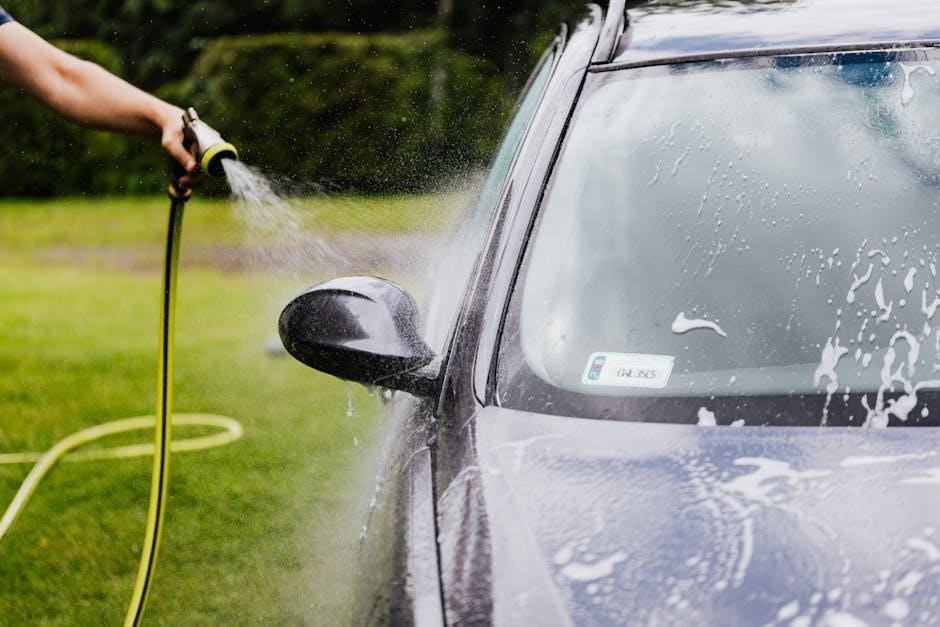
Advanced Features of Auto Start Systems
Advanced auto start systems offer smartphone app integration‚ GPS tracking‚ and remote door lock/unlock functionality‚ enhancing convenience and security for manual car owners.
7.1 Smartphone App Integration
Smartphone app integration allows users to control their manual car’s auto start system remotely through mobile devices. Apps like Cardot 4G offer features such as engine start/stop‚ door lock/unlock‚ and trunk release. GPS tracking enables vehicle location monitoring‚ enhancing security. These apps often require a stable internet connection and compatibility with the installed remote start system. Some systems provide real-time notifications and customized settings‚ ensuring a seamless user experience. This technology bridges convenience and modern connectivity‚ making vehicle management more accessible and efficient for manual car owners.
7.2 GPS Tracking and Vehicle Location
GPS tracking integrated with auto start systems allows owners to monitor their manual car’s location in real-time. Using a smartphone app‚ users can pinpoint their vehicle’s position‚ enhancing security and recovery chances if stolen. Some systems‚ like Cardot 4G‚ offer GPS features that work seamlessly with remote start functionality. This integration provides peace of mind‚ especially for manual car owners concerned about theft; The GPS feature often requires a cellular connection‚ ensuring constant accessibility. This advanced technology not only improves vehicle security but also adds convenience for locating parked vehicles in crowded areas.
7.3 Remote Door Lock/Unlock Functionality
Advanced auto start systems often include remote door lock and unlock features‚ enhancing convenience and security for manual car owners. Using a smartphone app‚ users can securely lock or unlock their vehicle from a distance. This feature is particularly useful for verifying door status or granting access to others without physical keys. Systems like Cardot 4G integrate this functionality seamlessly with remote start‚ ensuring a comprehensive control experience. The app-based interface provides real-time feedback‚ adding an extra layer of security and peace of mind. This feature is especially beneficial for owners who value advanced vehicle control and modern connectivity.

Cost and Installation Fees
Remote start kits for manual cars average $150–$500‚ with labor costs for professional installation ranging from $100–$300. Plug-and-play systems may reduce installation fees significantly.
8.1 Average Cost of Remote Start Kits
The average cost of remote start kits for manual cars ranges from $150 to $500‚ depending on the brand and features. Basic systems with essential functions like engine start and stop typically fall on the lower end‚ while advanced kits with smartphone integration‚ GPS‚ or additional security features are pricier. Installation fees from professionals can add $100 to $300‚ though some plug-and-play options reduce labor costs. Factors like vehicle complexity and compatibility also influence pricing‚ making it essential to choose a kit designed for manual transmissions to ensure proper functionality and safety.
8.2 Labor Costs for Professional Installation
Labor costs for professional installation of a remote start system in a manual car typically range from $100 to $300‚ influenced by the complexity of the installation‚ vehicle specifics‚ and installer expertise. Manual transmissions often require bypassing the clutch safety switch‚ adding to the complexity. The installer’s qualifications and regional labor rates also affect the cost. Additional fees may include programming the remote or integrating with existing systems. Choosing a reputable installer ensures reliability and proper functionality‚ potentially saving money in the long run by avoiding issues from subpar installations. Comparing quotes from multiple professionals is advisable to find the best value for your specific needs.
8.4 Long-Term Savings and Benefits
Installing a remote start system in a manual car offers long-term savings and benefits. Reduced engine wear from consistent starting conditions and improved fuel efficiency during preheating can lower maintenance costs. Enhanced convenience reduces stress‚ especially in extreme weather. The system may also increase your car’s resale value‚ as it’s a sought-after feature. Additionally‚ some insurance providers offer discounts for vehicles with remote start systems‚ further offsetting initial costs. Overall‚ the combination of convenience‚ efficiency‚ and potential financial perks makes remote start a valuable investment for manual car owners‚ providing lasting benefits over time.

User Reviews and Experiences
Manual car owners praise remote start systems for convenience and comfort‚ especially in cold weather. Many report satisfaction with enhanced security and ease of use‚ though some note installation challenges.
9.1 Positive Feedback from Manual Car Owners
Manual car owners frequently highlight the convenience and comfort remote start systems provide. Many appreciate the ability to preheat their vehicles in cold weather‚ ensuring a warm and comfortable start to their journeys. Additionally‚ users often praise the enhanced security features‚ such as unique encrypted signals and theft prevention‚ which offer peace of mind. The ease of use and integration with smartphone apps are also commended‚ allowing for seamless control over their vehicle’s functions. Overall‚ the positive feedback underscores the practical benefits of auto start technology for manual transmission vehicles.
9.2 Common Complaints and Challenges
Some manual car owners report challenges with remote start systems‚ such as installation complexities and compatibility issues. Bypassing the clutch safety switch can be tricky‚ leading to professional installation needs. Legal restrictions in certain areas may limit usage‚ causing frustration. Battery drain is another concern‚ as improper installation can deplete the vehicle’s battery. Additionally‚ some users experience reliability issues‚ particularly in extreme weather conditions. Despite these challenges‚ many agree the benefits outweigh the drawbacks‚ especially for convenience and security. Addressing these issues often requires professional expertise to ensure proper functionality and safety.
9.3 Real-World Usage Scenarios
Auto start on manual cars is particularly useful in cold climates‚ allowing drivers to warm up their vehicles before entering. Commuters appreciate the convenience of preheating or cooling their car while it’s parked. Parents find it helpful for quickly managing child drop-offs without restarting the engine. Additionally‚ remote start enhances security by allowing drivers to start their car in unsafe areas from a distance. Busy professionals value the time saved by not having to physically start the engine. Overall‚ it offers practical benefits for everyday driving scenarios‚ making it a versatile feature for manual car owners.

Future Trends in Auto Start Technology
Future trends include integration with smart home systems‚ advanced security features‚ and potential applications in autonomous vehicles‚ enhancing convenience and connectivity for manual car owners.
10.1 Integration with Smart Home Systems
Integration with smart home systems is revolutionizing auto start technology. Users can now control their car’s remote start function through voice commands or smart home devices. This seamless connectivity allows for scheduling start times‚ syncing with home automation routines‚ and receiving notifications. For instance‚ your car can start automatically when you leave home or adjust settings based on your daily schedule. This trend enhances convenience‚ making it easier to manage your vehicle from the comfort of your home‚ ensuring your car is ready when you need it.
10.2 Advanced Security Features
Modern auto start systems now include advanced security features to protect vehicles. Encryption technology ensures remote signals are secure‚ preventing unauthorized access. GPS tracking allows owners to locate their car if stolen‚ while app-based controls offer real-time monitoring. Some systems enable geofencing‚ alerting owners if the vehicle moves beyond a set area. Additional features like immobilizers and two-way communication provide enhanced theft prevention. These advancements not only improve convenience but also offer peace of mind‚ ensuring your manual car remains secure even with remote start functionality.
10.3 Potential for Autonomous Vehicles
Auto start technology lays the groundwork for autonomous vehicles by enabling remote control and app integration. As cars become smarter‚ features like keyless start and smartphone controls pave the way for fully autonomous systems. Advanced GPS and geofencing capabilities allow vehicles to monitor and adapt to their surroundings‚ enhancing safety and convenience. These innovations are stepping stones toward a future where vehicles operate independently‚ offering unparalleled freedom and efficiency. The integration of auto start systems with emerging autonomous technologies promises to revolutionize the driving experience‚ making it safer and more accessible for everyone.
